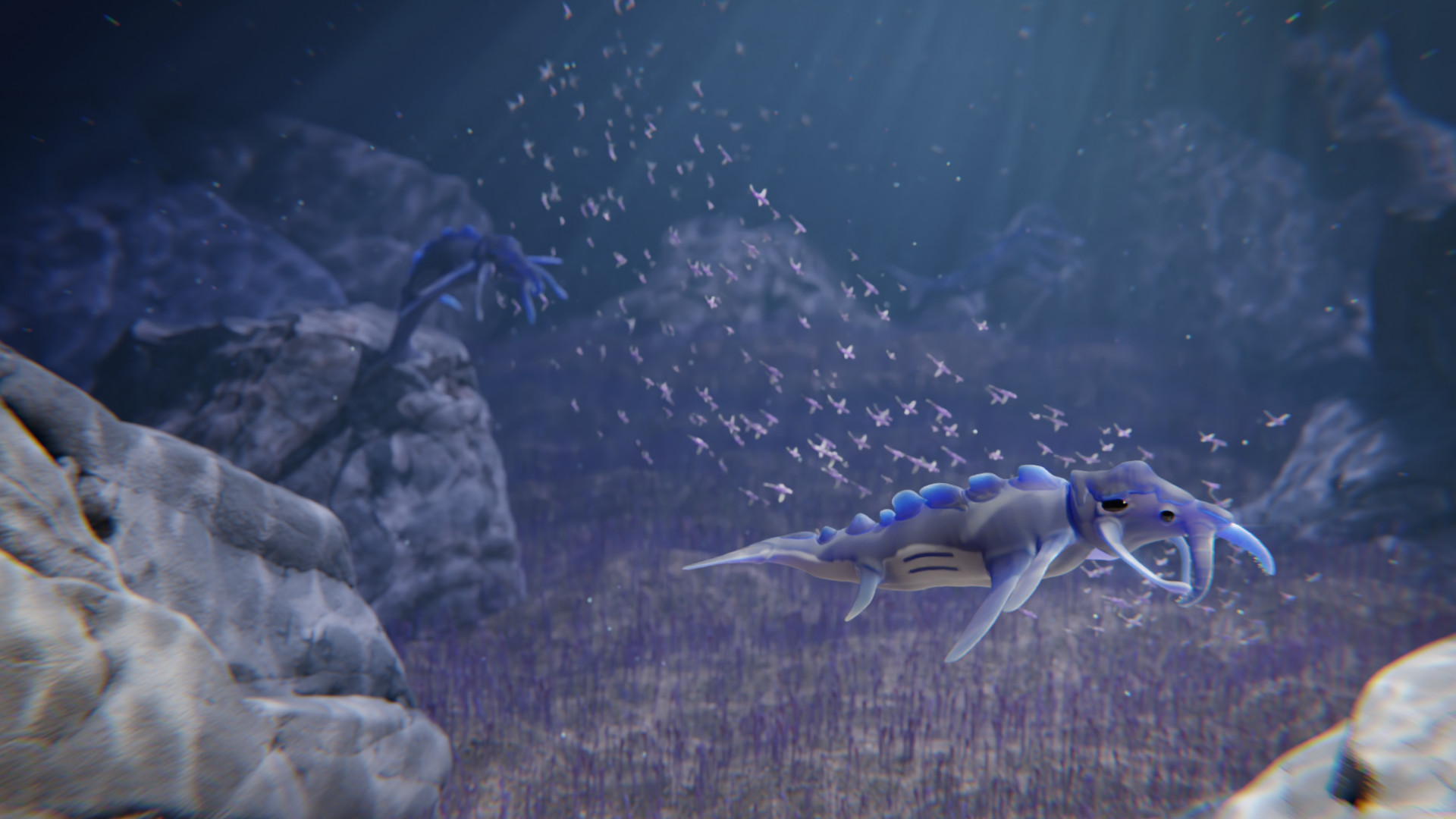Pinomisa
Pinomisa might just be on of the strangest descendants of durospina, its claws have transformed into large grabbing tentacles with hooks to grab their prey, its antenna have moved to the side of its head under the eyes, where it can smell and feel its prey move even under 15cm of substrate. Its back is filled with hard bony dorsal finns that even go under the skin which gives its tail a lot more extra stability and power, and it protects a vital nerve that goes from its brain all the way to its reproductive system. Pictured here, a trio of pinomisa investigate a school of Nerópteron. [creature design by Kipzilla]
Basic Information
Anatomy
The claws of durospina have grown longer and more flexible with twinned barbs running down the posterior margin, this allows for a greater range of motion and makes pinomisa better at catching fleeing prey and eating them. The two antenna on top of durospina have evolved to move to the sides and now hang down from the face to catch any movement that happens underneath the creature and inside the substrate. Durospinas legs have evolved into flippers, these allow the pinomisa to swim long distances and keep a solid pace, the back flippers are reinforced by the internal skeleton and the three front pair of flippers keep the pinomisa stable. Durospina’s Armour has evolved into a skeletal structure, some of which is internalized. It now forms a protective layer around the main nerve running from front to back and forms back finns to give extra stability. It is also segmented for greater range of motion and enforces the backfin with extra stability and power. This allowed the pinomisa to survive more attacks as a young and allows for faster swimming as an adult. Pinomisa’s spiracles have moved to the side of the body to allow for extra waterflow and to make space for the skeleton on top. They however are smaller in size and require an almost constant water flow to stay sufficiently oxygenated.
Genetics and Reproduction
Pinomisa females release a big cloud of gametes when around fertile males, which the males can smell through the water, these gametes get released at irregularly when the female is sufficiently well fed to divert resources to gamete production. These gametes will then combine and form a lightweight sticky membrane which will stick to any organisms they contact.
Growth Rate & Stages
Pinomisa’s eggs will stay on their host for up to three weeks when they will hatch and release a small pinomisa resembling their adult form. They will they stay with their host either latching on with their arms or by swimming closely near it for protection and ease of movement. In this stage of its life it will eat parasites and dead skin cells from the host. However when they get too big they will stop following their host and either find other hosts to clean or drop down to the bottom and eat small creatures from the substrate.
Ecology and Habitats
Pinomisa have a nearly worldwide distribution, being excluded only from the extremes of the polar waters and the toxic waters near Niylan.
Dietary Needs and Habits
Pinomisa are generalist predators. In the first stages of their life they will eat parasites and other small creatures but they will slowly grow and start praying on other creatures that could be bigger. It can either find food by sensing it through the substrate and then grabbing it with its arms or it could use its eyes to find large prey, turn them on their backs with their arms and then tear their bellies open and eat them alive.
Additional Information
Perception and Sensory Capabilities
Pinomisa has extremely sensitive antenna that angle downwards and which can detect the slightest bit of movement under the substrate, they use this to track down their prey which they then can catch in their grabbing arms.
Symbiotic and Parasitic organisms
Pinomisa is in its early stages of life symbiotic to anything it hatched on. It gets rid of parasites and dead skin cells, however this changes over it life and it might actually become its host's predator.











Comments